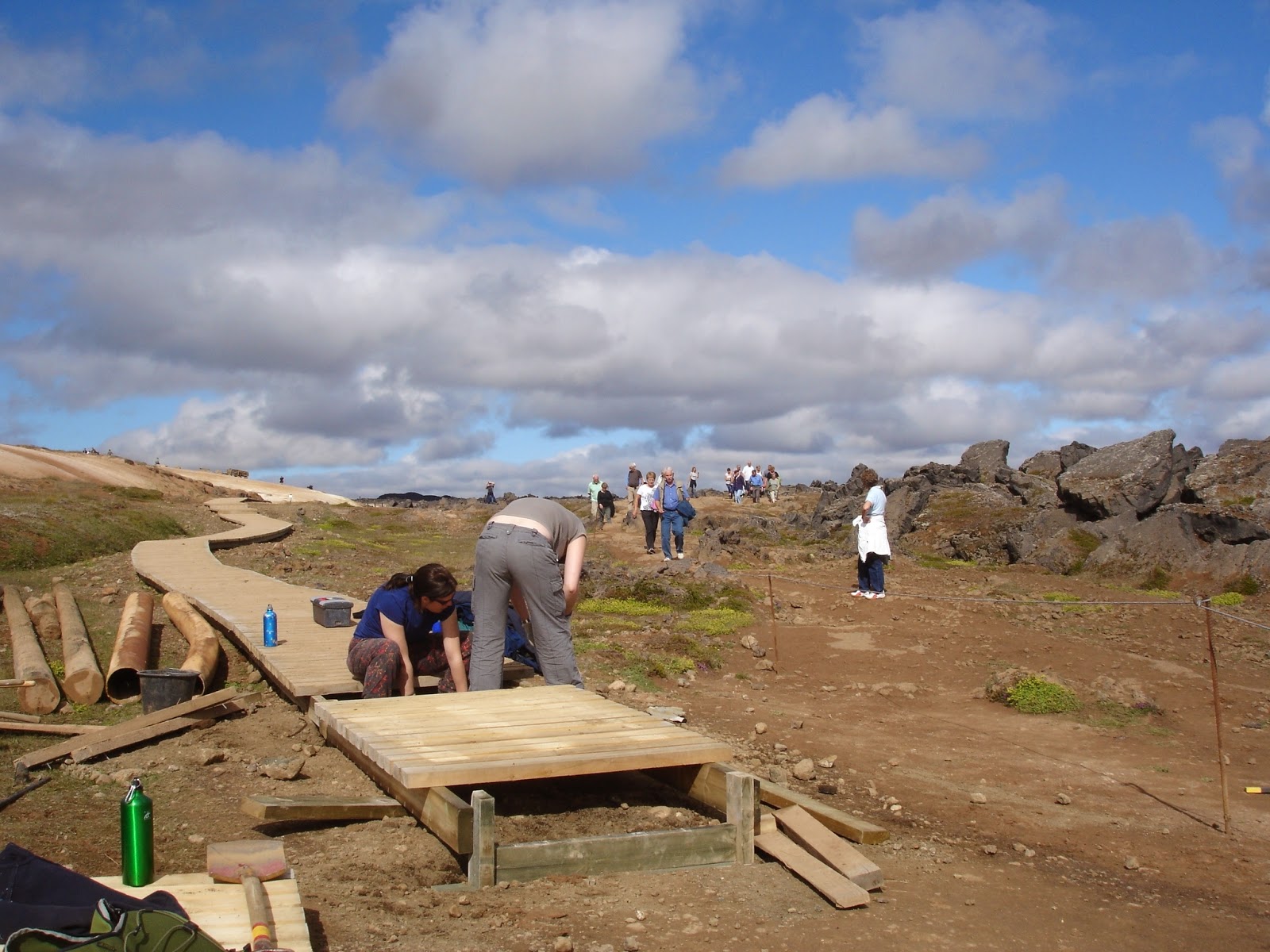Note: click on any photo to view the pictures as a slideshow.
The 2010 Eyafjallajökull eruption is known to all, and the disruption it caused to air travel has become part of modern folklore. Everyone has a story to tell and ours is about a leader training course with no trainees – they were dotted about European airports, unable to approach any closer. Meanwhile we still had to prepare for the season. The next four pictures were taken along Route 1 between Reykjavík and our base at Skaftafell during May that year.
 |
| Photo: Jenny Please |
 |
| Photo: Jenny Please |
 |
| Photo: Jenny Please |
 |
| Photo: Jenny Please |
The disruption to air traffic was caused by that part of the eruption which happened under the glacier. This created a very fine dust which was thought to be especially damaging to aero engines. Ironically, Reykjavik's airport, at Keflavik, was not much affected by the dust, as the winds kept it away.
However Reykjavik did come in for some of it -
In May the following year the nearby and very active Grímsvötn went off. This time there was none of that fine dust so the airways were safe.
 |
| The First Few Minutes - at Skaftafell on the southern edge of Vatnajökull |
 |
| The First Few Minutes - at Skaftafell on the southern edge of Vatnajökull |
This eruption just shot out a heavy dust which rained down closer to home. Here it comes ...
The next day at 3 o'clock in the afternoon:
This was taken looking out of our window to the house opposite, a few tens of metres away.
Before 1362, at the southern edge of Vatnajökull, there was a fertile and prosperous region known as 'The Little Province'.
In that year there was a devastating explosive eruption which blasted out huge quantities of tephra. Since 1362 the area has been known as Öræfi, which has come to mean 'Wasteland'.
Here it is today. The snow covered peak is the still active volcano: Öræfajökull (there was a smaller eruption in the 18th century). The black 'beach' - volcanic ash - covers what were once productive farms.
A few years ago ICV volunteers helped archaeologists who were excavating a summer farm at Öræfi. which had been buried in tephra since the 14th century. Apart from some well preserved architectural remains, nothing much was found. It is possible that the people were forewarned, possibly because of earth tremors, and evacuated the place before it happened.


















































